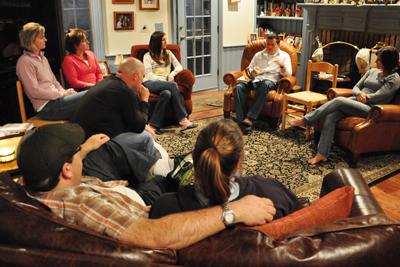Differences from small groups

Many exploring the idea of LifeChange Partners might say, "We already have small groups in our church. Don't they do the same thing?" Great question, and the short answer is "no." Look through the following comparison chart to see differences between LifeChange Partners and typical Small Groups in churches. This comparison is not intended to diminish the benefits of small groups, only highlight the differences. Similar comparisons could be made between Small Groups and Sunday School Classes, or other entities within churches.
TYPICAL SMALL GROUPS BASICS
▪️Lead by designated leader.
▪️8-15 participants.
▪️Participants part of same church.
▪️All follow curriculum or structured teaching focus.
▪️Designated meeting time and place.
▪️Male/Female participants in same group.
LIFECHANGE PARTNERS BASICS
▪️Mutual accountability/leading
▪️2-3 participants
▪️May be same or different churches.
▪️Only curriculum is Scripture
▪️Flexible meeting times/places.
▪️Same gender partners.
TYPICAL SMALL GROUP DYNAMICS
▪️Small enough to feel connection with the group, and therefore, the church.
▪️No preparation needed by participants between groups.
▪️Too large to be truly close and open with whole group.
▪️12 participants have 66 communication channels present.
▪️Possible to sit back and observe without participation.
▪️Serves primarily a social connection function.
LIFECHANGE PARTNERS DYNAMICS
▪️Directs participants toward greater connection and relationship with God.
▪️Expectations between meetings to read, pray, serve, share.
▪️Small enough to develop transparency and openness.
▪️3 participants have 3 communication channels present.
▪️Impossible to not fully engage with partners.
▪️Serves primarily a discipleship function.
